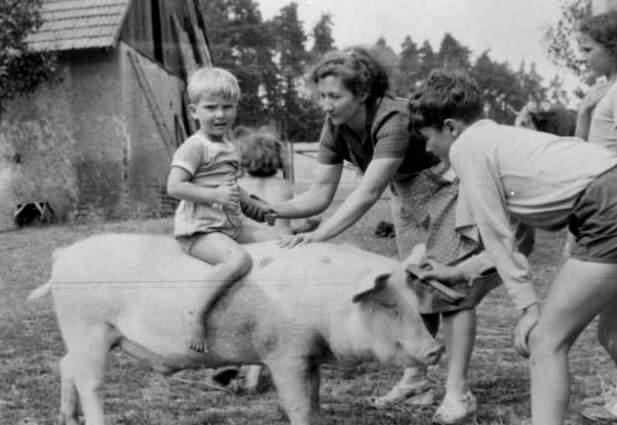
German Demographics

Figure 1.--Many Grmans as late as the 1950s had parents or grandparents in rural areas. This was one reason the Heimat movies were so popular in the 1950s. Visits to the old folks were family traditions. This is less true today as Germany is such an urbanized country.
|
|
Germany is one of the most modern and highly urbaized countries in the world. Demographics is the study of the characteristics of the population. This includes elements like population density, urbanization, ethnicity, education, health, economics, religion, and other imprtant factors.
The population tital;s about 82 million (2005). This makes it the world's 14th most populous country and the largest country in Europe with the exception of Russia. And like most of Europe, it is an aging population with zero population growth. This means that there is a relatively small cohort of youth. About 16 million people living in Germany are of non-German descent. About 9 million of these people with foreign ancestry have become German citizens. The largest non-German group is Turks, the descdents of immogrant workers recruited to meet labor needs of the German Economic Miracle following World War II. Germany also attracted refugees from variouus developing countries. The German cconstitution long had a clause guaranteeing a 'right' to political asylum, but becuse of the number of refugees, the government has had to institute restrictions. Germany is a highly urbanized country. About ?? percent of the population lives in cities and towns. The country begn a rapid period of industrialization in the mid-19th century. This left the country dependent on imports to feed the expanding urban population. Germany industry developed in the West, espcially the Ruhr basin whre there were iron and coal deposit. This set in motion an internal migrration from the rural east to the urban west which the Germans in the 19th century referred ti as the Ostflucht. This continued after World war II when Germans from Eastern Europe were expelled. Most wanted to go to the Allied rather than the Soviet (eastern) occupation zone. This continued during the Cold War with Germans in the DDR (East Germany) trying to reach the West. Since unification this trend has continued because of the inefficent economic system left by the DDR. German states were among the first to introduce public education. Germany developed perhaps the fies educational system in the world and today hs one of the best educated populations.
HBC

Navigate the Boys' Historical Clothing German pages:
[Return to the Main German regional page]
[Return to the Main German page]
[German choirs]
[German movies]
[German school uniforms]
[German royalty]
[German youth groups]
[German sailor suits]
[Lederhosen]
[Ethnic]
[Tights]
[Long stockings]
Navigate the Boys' Historical Clothing Web Site:
[Introduction]
[Activities]
[Bibliographies]
[Biographies]
[Chronology]
[Clothing styles]
[Countries]
[Contributions]
[FAQs]
[German glossaries]
[Images]
[Links]
[Registration]
[Tools]
[Boys' Clothing Home]
Created: 8:03 PM 12/31/2008
Last updated: 8:03 PM 12/31/2008



